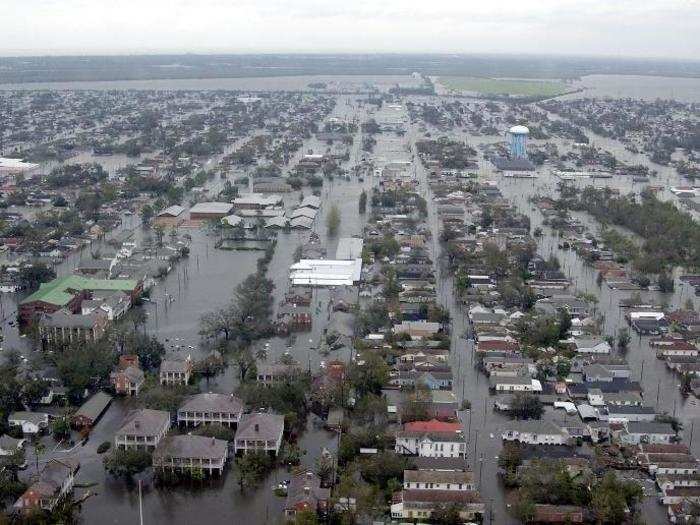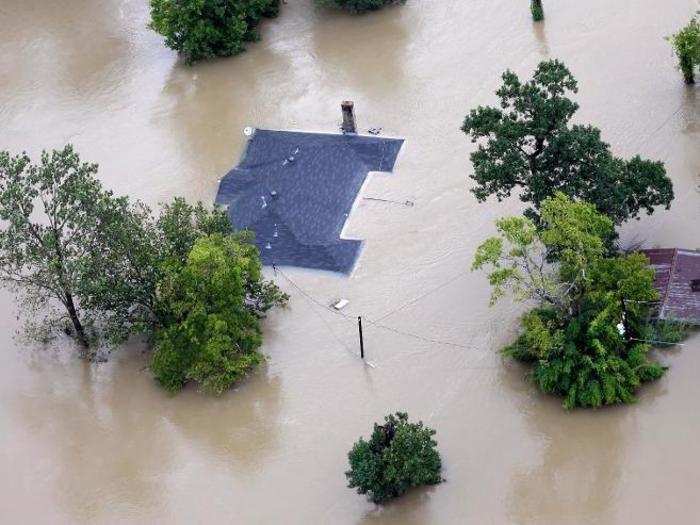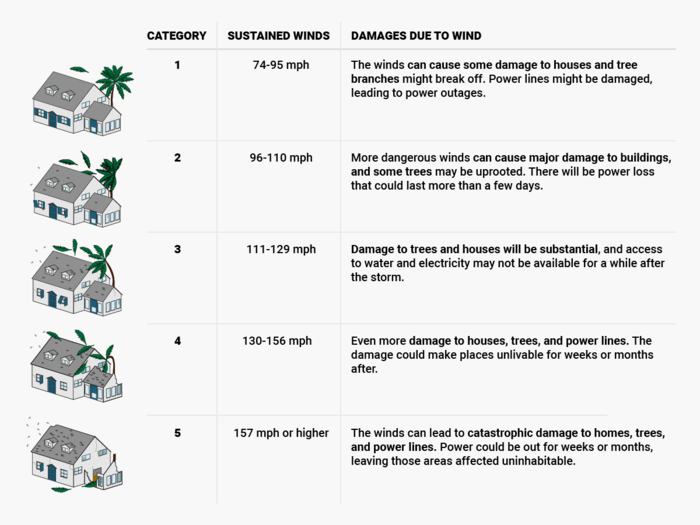Hurricane categories only tell part of the story - here's what kind of damage storms like Irma and Harvey can do
The problem with extending the Saffir-Simpson Scale is that it's also a measurement of destruction, and Category 5 storms typically cause total destruction of buildings and utilities. Technically, categories above 5 wouldn't cause more damage because there's no more damage to be done.

If Hurricane Irma remains a Category 5 storm when it makes landfall, it could cause power outages and leave most of the areas where it hits uninhabitable for weeks to months. Theoretically, if we extended the Saffir-Simpson Scale, Irma would be a Category 6, with wind speeds between 175-195.

Hurricane Andrew was one of the strongest storms ever to make landfall in the US. It was a Category 5 hurricane when it hit Dade County, Florida in August 1992. Category 5 storms have wind speeds greater than 156 mph, which can completely destroy most framed homes.

Category 4 hurricanes have wind speeds of 131-155 mph, uprooting most trees, and creating power outages that can last weeks or even months. Hurricane Charley was a Category 4 when it made landfall in Florida in 2004.

Hurricane Katrina in 2005 was the most devastating storm ever to hit the United States. It killed 1,833 people and caused $108 billion in damage, though it was technically a Category 3 when it made landfall in Louisiana with sustained wind speeds of 125 mph.

Category 3 storms have wind speeds of 111-130 mph. But with Sandy, the storm surge did some of the worst damage. It reached nearly 8 feet in parts of the Jersey Shore and 6.5 feet around New York City. Its "superstorm" status was because it was so wide — up to 1,000 miles across.

While a hurricane's category classifies how strong it is, this definition can't fully predict how devastating it might be. Superstorm Sandy hit Category 3, but by the time it made landfall in New York and New Jersey in 2012 it had weakened to a post-tropical cyclone.

Category 2 hurricanes have wind speeds of 96-110 mph. Storms of this intensity can cause major damage to homes and uproot large trees. They also generate power outages that last up to weeks. Hurricane Ike was a Category 2 when it hit Texas in 2008.

Category 1 hurricanes have wind speeds of 74-95 mph. They can damage the outside of homes, break large tree branches, and possibly knock down power lines, causing outages for several days. Hurricane Dolly was this rating when it hit Texas in 2008.

Harvey was particularly devastating because it stalled over the Houston area, staying in roughly the same place for five days.

While strong winds can rip shingles off roofs and tear down power lines, flooding often causes more widespread, costlier damage — and can be more dangerous for humans, no matter what the hurricane category is.

But "storms are too complex to define by one number," Needham explained. While Harvey's strong winds on the Texas Gulf Coast caused widespread destruction, most of the devastation came when it turned into a tropical storm dumping feet of water on Texas and Louisiana.

Once a tropical storm crosses the wind threshold above 39 mph, it gets a name. Most storms that make landfall in the US are tropical storms, not "major" hurricanes of Category 3 and above.

The Saffir-Simpson scale used to distinguish a hurricane from a tropical storm is based solely on maximum sustained wind.

Popular Right Now
Advertisement